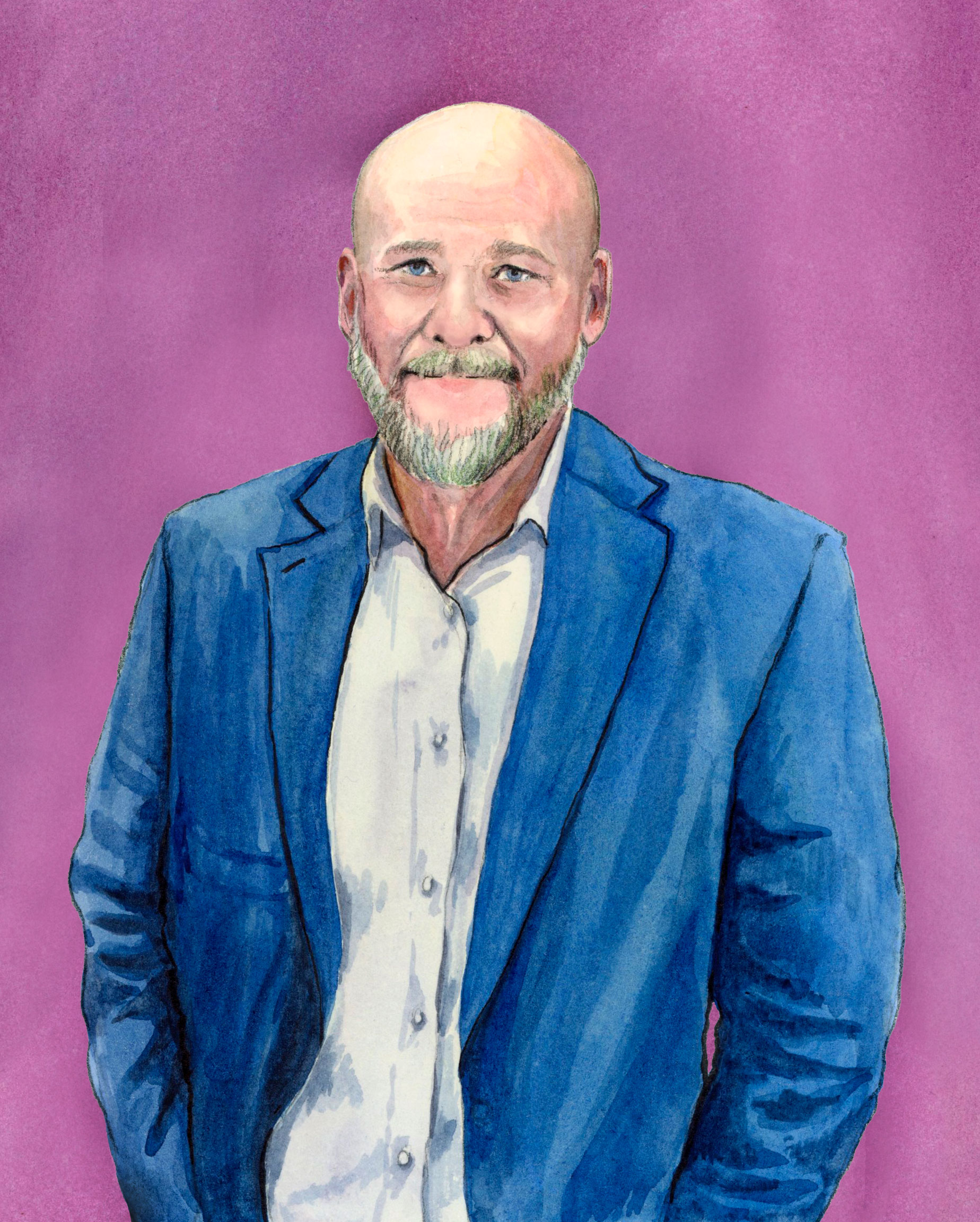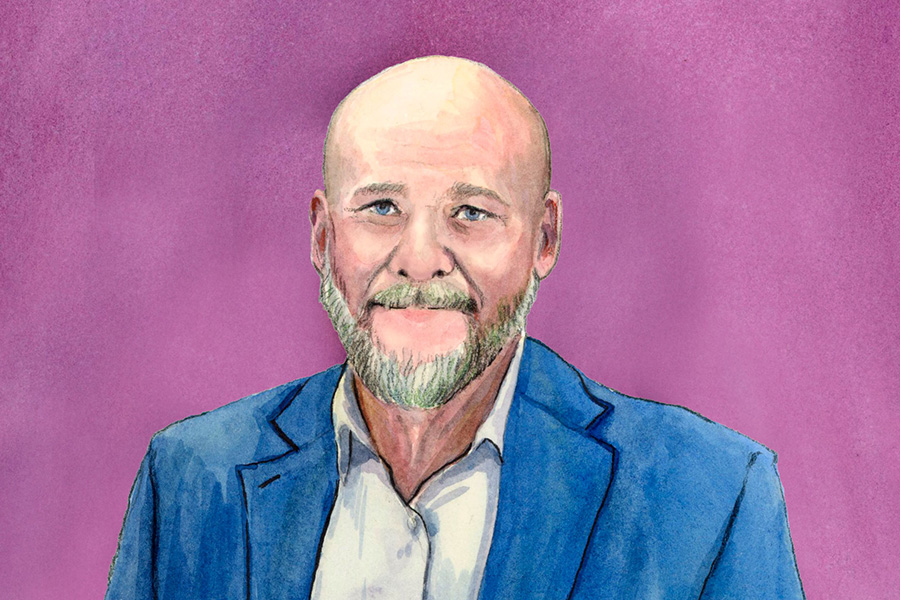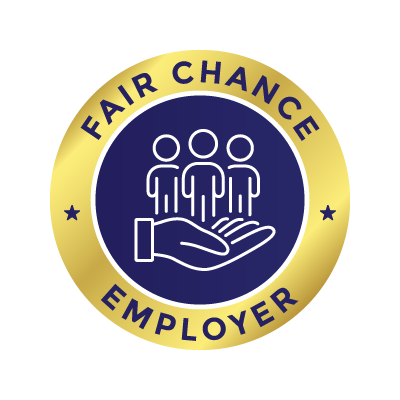From his earliest memories, Dave’s life in Cerritos, California, was shaped by chaos he couldn’t name and patterns he didn’t yet understand. Growing up, he was around alcohol all the time–pouring Budweiser for his father’s friends before he even learned how to read. By age six, he was sneaking sips from leftover cans. By ten, he was stealing alcohol, first money from his parents, and then from cards in his neighbors’ mailboxes during the holidays.
The home where Dave lived was one of harsh discipline and both physical and emotional abuse. He remembers being beaten often, followed by yelling and threats. Dave didn’t realize his childhood was different. To him, punishment and pain were just part of growing up.
By age 12, Dave had tried marijuana. At 13, cocaine. And not long after, he was stealing whatever he could to feed a growing addiction. “I thought I found God the first time I did cocaine,” Dave recalls. “Not because of how it made me feel, but because of how it didn’t make me feel.” The numbness was an escape from a life filled with fear and shame.
Dave’s Path to the Justice System
Drugs pulled Dave deeper into crime, and his first arrest came before the end of high school. After graduating, Dave transitioned from cocaine to methamphetamine, and from using to dealing. “I didn’t graduate high school and decided to become a drug dealer,” Dave says. “But I was buying some, selling some, and before I knew it, I was living off it.”
The money, status, and lifestyle came fast, along with weapons, violence, and eventually, prison. Over the years, Dave was sentenced to several prison terms, starting with a two-year term, followed by a five year term, six years, and finally ten years. “The day I got out was the day I started heading back,” he says. “I was living on the installment plan.”
Inside, Dave embraced prison politics and wore the ink to prove it. He believed respect came from violence, not realizing until much later how much fear and insecurity were driving him. “I wasn’t a man. I was a coward, hiding behind violence.”
After his fourth prison term, Dave returned to the streets. Just months later, he was back to dealing, on the run from law enforcement. But then came the moment that changed everything. One day, Dave saw a helicopter hovering above the house he was in. Knowing it was coming for him, he fled. Soon, he found himself in a high-speed police chase, smashing through traffic, desperate not to return to prison. “I didn’t want to die,” he says. “But I didn’t want to live, either.”
The police chase ended in an arrest. Dave was charged with enough felonies to face 29 years in prison. Dave couldn’t imagine surviving it. For the first time in his life, he was afraid.

Dave's Plea for a Second Chance
In a final plea for help, he wrote a letter to the judge. Not to ask for leniency, but to take full responsibility. In the letter, he confessed to everything. He knew he needed help, but he also wanted a chance. He asked to be sent to Delancey Street, a long-term residential rehabilitation program. “Send me there,” he wrote, “and if I fail, lock me up forever. But if I succeed, I promise you’ll see me again, just to say thank you.”
To Dave’s shock, the judge agreed to let him try the program.
Delancey Street was a turning point for Dave. A two-year residential program turned into an eight-and-a-half-year commitment. Dave thrived in the therapeutic community environment. “For the first time in my life,” he says, “I started to feel like I had value. Like I mattered.”
Delancey Street was nothing like prison. There were no cells, no guards, no bars. Just structure, accountability, and community. At first, Dave approached it with the same instincts he had relied on in prison: be tough, stay guarded, don’t let anyone in. But little by little, something shifted.
Dave recalls. “I wasn’t just surviving, I was becoming someone I could be proud of.”
Delancey Street
The program was supposed to last two years. About three and a half years into his stay, Dave got a visit from Mimi Silbert, the founder of Delancey Street. She asked him to stay five more years. At first, he didn’t understand why. But then she asked him to take on a new role, running the Los Angeles facility.
The LA facility housed roughly 275 people. Bloods, Crips, Norteños, Sureños, white power skinheads, and everyone in between. “It was an eclectic group of people,” Dave says. “And suddenly, I was responsible for helping them rebuild their lives.” It was a full-circle moment for a man who once believed prison was his only future.
In that leadership role, Dave learned not just how to manage people, but how to support them. He listened, coached, and challenged others the way he had once been challenged. And he showed them what it looked like to come out on the other side.
Early on in his time leading the LA facility, he was given the nickname “Dinner Date Dave” because of his habit of always eating dinner with the new arrivals to the community. He wanted to make sure that from the get-go, they felt welcomed, accepted, and cared for in the new environment.
Starting The Other Side Academy
After eight and a half years with Delancey Street, Dave transitioned into work within the construction industry. While he enjoyed the work and increased pay of working in the trades, he was still deeply passionate about the recovery community and helping other people with similar stories rebuild their lives. Then a unique opportunity came knocking at his door. He was approached by some people who were looking to replicate the Delancey Street model in Salt Lake City. The founders were looking for someone who didn’t just have professional qualifications, but lived experience. Someone who had walked through fire, come out the other side, and knew how to lead others through their own transformations.
“They said they were looking for someone with credibility,” Dave recalls. “Someone who had been through it, not just read about it. And I was all in.”
Dave was tasked with building the community, now known as The Other Side Academy, from the ground up. He leaned on everything he had learned at Delancey Street: structure, accountability, and mutual support, and adapted it to meet the needs of the Salt Lake City community. He developed programs, hired staff, and worked side-by-side with clients, always making sure the work stayed rooted in compassion and dignity.
A Place for Rebuilding Lives
The Other Side Academy became a place where people could rebuild their lives, no matter how far they had fallen. It offered housing, counseling, job training, and peer mentorship. But more than anything, it offered hope.
For Dave, the work wasn’t just professional, it was deeply personal. Every success story reminded him of how far he’d come. Every setback challenged him to keep improving the model. And every person who walked through the doors reminded him of the promise he’d made years ago: that if he got a second chance, he’d spend the rest of his life making sure others had one too.
Today, The Other Side Academy stands as a testament to what’s possible when people believe in transformation. The facility has expanded to multiple locations across Salt Lake City, and has now expanded to Denver. Dave remains at the heart of it, mentoring, leading, and proving that with the right mix of accountability and compassion, recovery, redemption, and purpose are within reach.
What are you waiting for?
It’s time to leave the past behind. Use our tool to quickly check if you have records that are eligible for expungement today!
Find out if you’re eligible in under 3 minutes.
This story is part of our #1in3 campaign, a project to end the stigma and raise awareness of how common it is to have a criminal record.
1 in 3 Americans has a criminal record, which is a lot more common than people think. No one expects to be involved in the justice system, but it can happen to anyone. People of all ages, backgrounds, genders, and income-levels are involved in the justice system. Their pathways vary, but the barriers of a record affect them all. Our hope is that by sharing their portraits and telling their stories, we can change the way people think about people with records and appreciate them for all they have overcome.




